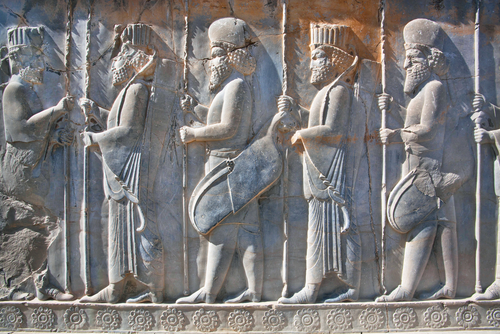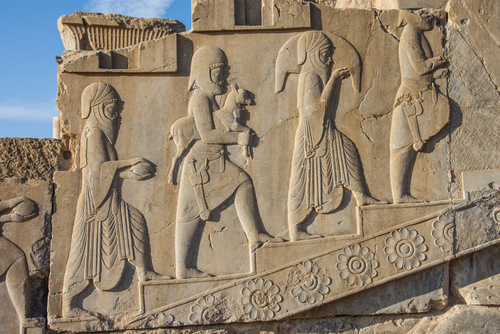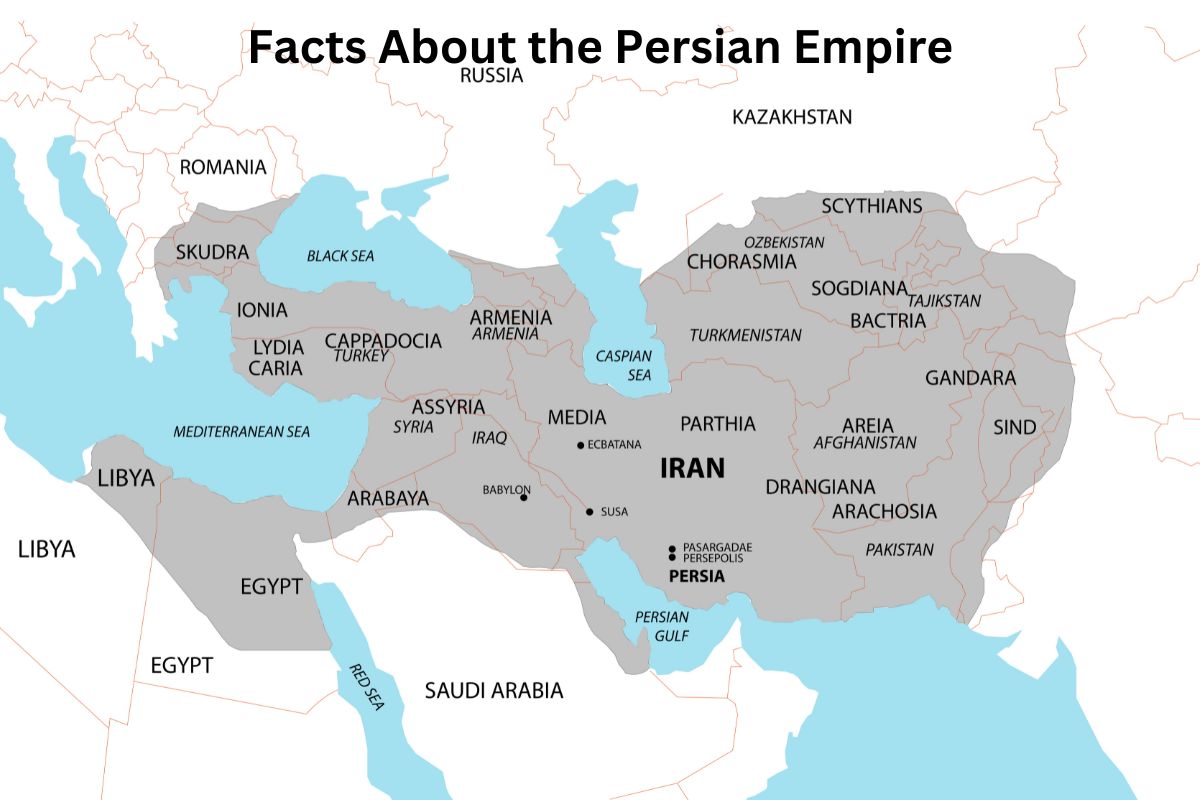The Persian Empire, also known as the Achaemenid Empire, was one of the most powerful and expansive empires in ancient history.
Founded by Cyrus the Great in the 6th century BCE, it stretched from the Indus Valley in the east to Egypt and Thrace in the west, covering a vast territory.
The empire was known for its centralized government, religious tolerance, and administrative efficiency. It developed impressive infrastructure, including the Royal Road, and showcased wealth and opulence in its capital city of Persepolis.
The Persians made significant contributions to art, literature, and engineering. However, the empire declined after being conquered by Alexander the Great in 330 BCE, leading to the fragmentation of its territories and the rise of subsequent regional powers.
Persian Empire Facts
1. Founded by Cyrus the Great in the 6th century BCE
The Persian Empire, also known as the Achaemenid Empire, was founded by Cyrus the Great around 550 BCE. Cyrus was a skilled military leader who united various tribes and kingdoms in the region of Persis (modern-day Iran).
Also Read: Timeline of the Persian Empire
He expanded his empire through military campaigns, eventually establishing a vast and powerful empire that would endure for centuries.

2. Stretched from the Indus Valley to Egypt and Thrace
At its height, the Persian Empire encompassed a vast territorial expanse. It stretched from the Indus Valley in the east, which includes parts of modern-day Pakistan and India, to Egypt in the west.
Also Read: Accomplishments of Persian Empire
In the north, it extended into Thrace, which encompasses parts of modern-day Bulgaria, Greece, and Turkey. This expansive empire covered a diverse range of cultures, regions, and peoples.
3. Had a centralized government with provinces called satrapies
The Persian Empire had a highly organized and centralized government. Cyrus the Great and his successors implemented a system of governance that divided the empire into provinces called satrapies.
Each satrapy was governed by a satrap, who acted as a regional administrator and reported directly to the king. The satraps were responsible for collecting taxes, maintaining order, and implementing the king’s policies within their respective territories.
This system helped to ensure the administration and control of the vast empire, as well as facilitate communication and the flow of resources.
4. Practiced religious tolerance within the empire
The Persian Empire was known for its policy of religious tolerance, which contributed to its social stability and cohesion.
While the Persians themselves practiced Zoroastrianism, a monotheistic religion founded by the prophet Zoroaster, they allowed their subjects to freely practice their own religions.
Also Read: Darius the Great Accomplishments
This policy fostered a sense of inclusivity and respect for diverse religious beliefs, helping to prevent widespread religious conflicts and promoting harmony within the empire.
5. Developed the Royal Road, an extensive road network
Under the rule of Darius I, the Persian Empire constructed an impressive network of roads known as the Royal Road. This road system stretched over 2,500 miles (4,000 kilometers) from Susa, the administrative capital, to Sardis in Anatolia (present-day Turkey).
It facilitated rapid communication, trade, and the movement of troops throughout the empire. It featured stations and rest stops for travelers, ensuring safe and efficient transportation across vast distances.
The Royal Road played a crucial role in maintaining the unity of the empire, facilitating cultural exchange, and promoting economic prosperity.

6. Known for wealth and opulence, especially in the capital Persepolis
The Persian Empire was renowned for its wealth and opulence, particularly showcased in its capital city of Persepolis.
Persepolis served as a grand center of power and administration, featuring magnificent palaces, audience halls, and structures adorned with intricate carvings, reliefs, and luxurious decorations. The city displayed the wealth and splendor of the empire, with its opulent architecture and lavish artworks.
The Persians amassed vast treasures through their conquests and trade, including gold, silver, precious gems, and exotic goods, which contributed to their reputation for opulence and prosperity.
7. Had a professional standing army called the Immortals
The Persian Empire maintained a highly organized and skilled military force, including a special unit known as the Immortals.
The Immortals were an elite group of soldiers who formed the core of the Persian army. Their name derived from the fact that whenever a member was killed or incapacitated, they were immediately replaced, ensuring a constant number of 10,000 soldiers.
The Immortals were renowned for their discipline, bravery, and effectiveness in battle. They played a significant role in the empire’s military campaigns and acted as a formidable force, aiding in the empire’s expansion and defense.
8. Skilled in administration, engineering, and construction
The Persians were known for their administrative efficiency and expertise in engineering and construction. They demonstrated their skills through the construction of impressive structures and infrastructure projects.
Notably, the city of Persepolis showcased their architectural prowess with its grand palaces, audience halls, and intricate carvings.
The Persians also developed advanced irrigation systems and aqueducts, which supported agricultural productivity and provided water to their cities.
Their administrative abilities and engineering knowledge were instrumental in maintaining the empire’s functionality and prosperity.
9. Made significant contributions to art, including metalwork and literature
The Persian Empire made noteworthy contributions to various forms of art and culture. They excelled in decorative arts, including intricate metalwork, pottery, textiles, and jewelry.
Skilled artisans crafted exquisite objects using precious metals, such as gold and silver, often adorned with intricate patterns and designs. Persian literature flourished during this period, particularly in the realm of epic poetry.
The famous poet Ferdowsi, for instance, composed the Shahnameh, an epic poem that became a cornerstone of Persian literature and a source of inspiration for subsequent generations.
10. Declined after being conquered by Alexander the Great in 330 BCE
The Persian Empire experienced a decline when it was conquered by Alexander the Great, the Macedonian king, in 330 BCE. Alexander’s forces defeated the Persian army and captured the empire’s capital, Persepolis.
Although the empire continued to exist under the rule of Alexander and his successors, the conquest marked a significant turning point in Persian history. The empire gradually fragmented and gave rise to subsequent regional powers, such as the Parthians and Sassanids.
Despite its decline as a political entity, Persian cultural and administrative influences continued to impact later empires in the region, leaving a lasting legacy in various aspects of art, language, and governance.
